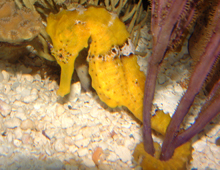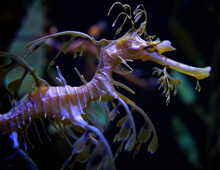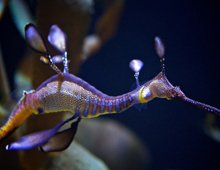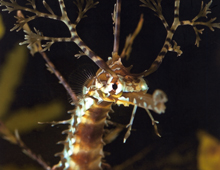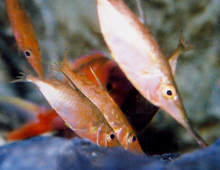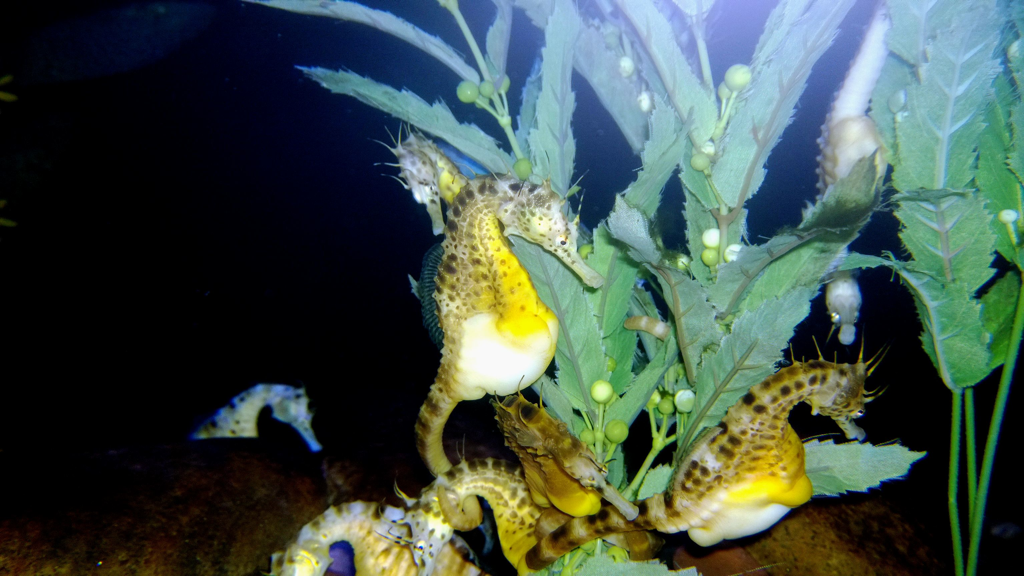
Pot-bellied seahorses, as the name suggests, have a large swollen belly. Like other seahorses, this species comes in a wide range of colors – brown, yellow, gray, white, orange or mottled with dark spots on its head and trunk. They have a forward-tilted, long-snouted head, eyes that can move independently of each other and a prehensile tail. Males and females differ in appearance. Males have a longer tail, a shorter snout and a smooth soft pouch-like area at the base of the abdomen. Females have more of a pointed stomach.

